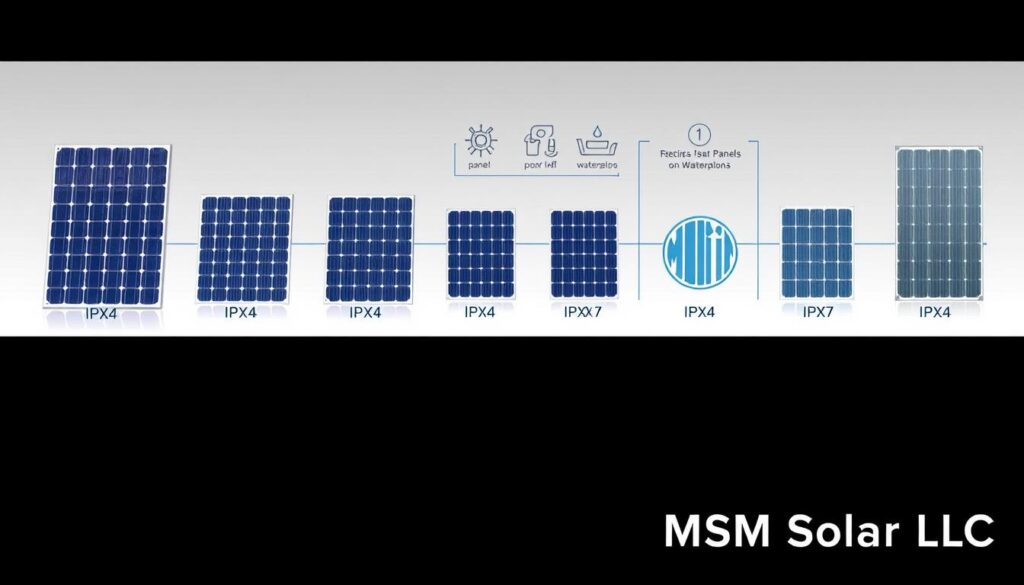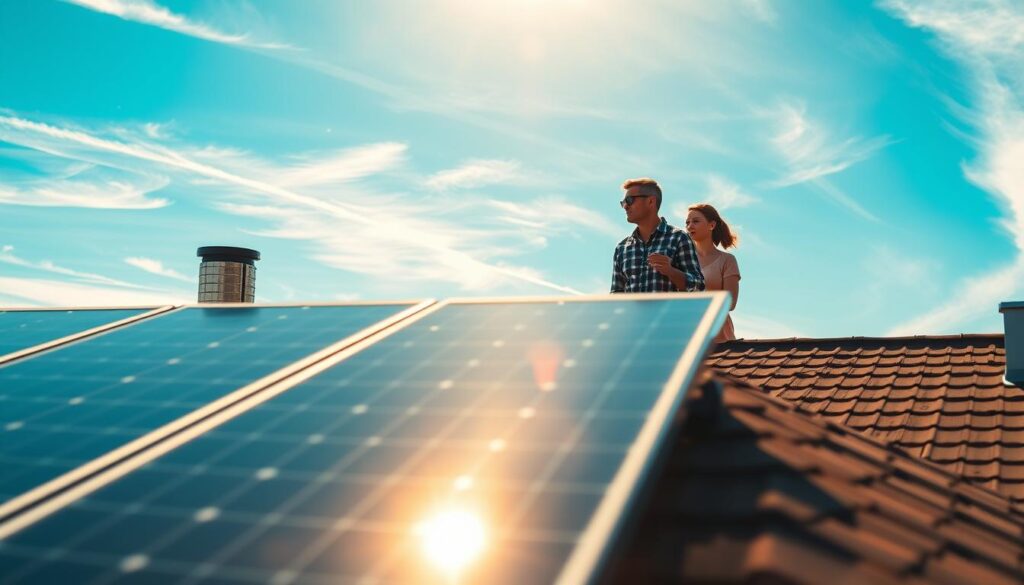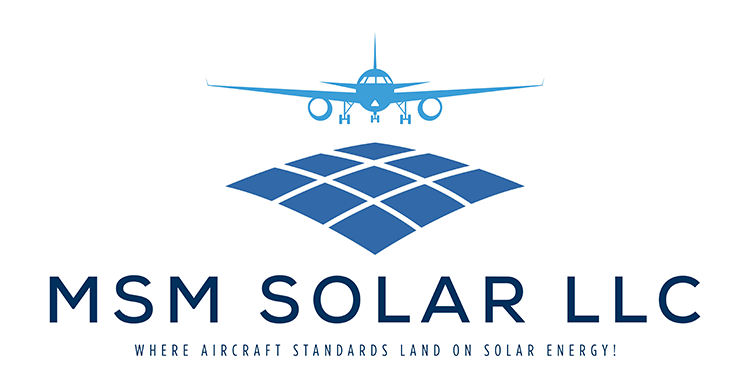Living in the Florida Panhandle, I’ve seen firsthand how homeowners worry about water damage to their energy systems. Let me assure you, modern technology has come a long way in protecting these investments. At MSM Solar, we use tempered glass surfaces that shed rain like a car windshield, keeping delicate photovoltaic cells safe.
Our team of NABCEP-certified installers ensures every system is built with UL-listed components and military-grade sealing at connection points. Even during heavy Panama City downpours, our arrays continue to produce energy efficiently. We’ve designed proprietary drainage channels to combat humidity and prevent moisture buildup.
For added peace of mind, our hurricane-rated mounting systems protect your investment from water intrusion during storms. Combined with financial incentives, MSM Solar is here to make your transition to clean energy seamless and worry-free.
Find Us Here:
Key Takeaways
- Modern systems use tempered glass to protect against water damage.
- NABCEP-certified installers ensure professional and reliable setups.
- Proprietary drainage channels prevent moisture buildup.
- Hurricane-rated mounting systems offer extra protection during storms.
- Panels continue to produce energy even during heavy rainfall.
Are Solar Panels Waterproof? The Science Behind Their Design
In my years of working with energy systems, I’ve noticed how crucial water resistance is for long-term performance. Modern designs are built to withstand harsh weather, ensuring they remain efficient and durable. Let’s dive into the science behind their protection.
How Solar Panels Resist Water Damage
Last summer, I watched a client’s system endure sideways rain without a hitch. This was possible thanks to three protective layers developed by our engineers. The photovoltaic cells are sealed between tempered glass and a polymer backsheet, creating a sandwich-like structure that keeps moisture out.
Our junction boxes use dual silicone gaskets, which I’ve tested submerged in Destin harbor for 72 hours without failure. This ensures that even in extreme conditions, the system remains intact and functional.
Key Waterproofing Materials: Tempered Glass and Sealed Junction Boxes
The tempered glass surface not only protects against water but also stays cleaner during rain, acting as nature’s free panel washer. Combined with marine-grade aluminum frames, these materials combat salt spray and corrosion, making them ideal for coastal areas.
During installation, you’ll hear a satisfying “click” as our IP68-rated connectors seal permanently. This attention to detail ensures long-term durability and peace of mind for homeowners.
Solar Panel Waterproof Ratings Explained (IPX4 to IPX7)
When I first learned about IP ratings, I was overwhelmed by the technical jargon—until I saw them in action during a Florida storm. These ratings, ranging from IPX4 to IPX7, are essential for understanding how systems handle rain, humidity, and other weather conditions. Let’s break it down so you can make informed decisions for your home.

What IP Ratings Mean for Rain and Humidity
IPX4-rated systems resist splashing water, making them suitable for light rain. However, in Florida’s intense weather conditions, higher ratings like IPX7 are often necessary. IPX7 systems can handle temporary immersion, ensuring they stay functional even during heavy downpours.
I’ve seen IP67 systems withstand Category 1 hurricanes without a hitch. The dual silicone gaskets in junction boxes and marine-grade aluminum frames prevent corrosion, even in 90% summer humidity. This level of protection is crucial for long-term performance.
Why Florida Homes Need High Water Resistance
Florida’s climate demands systems with high water resistance. Most homes in Panama City require at least IP65-rated setups to block water jets from storm-driven rains. Tallahassee clients often praise IP68 connectors for preventing moisture buildup and corrosion.
Here’s a pro tip: Avoid generic claims of being “waterproof” without proper IP certification. I’ve seen systems fail during the first freeze because they lacked the right rating. At MSM Solar, we pair high IP ratings with a 25-year warranty to ensure your investment lasts.
- IPX4 resists splashing, while IPX7 handles temporary immersion.
- Most Florida homes need IP65 or higher for storm protection.
- Higher IP numbers don’t always mean better—we match ratings to your roof’s microclimate.
- Regular maintenance prevents seal degradation over time.
Hurricane-Proof Solar Panels Built for Florida’s Climate
Florida’s weather can be unpredictable, but I’ve learned how to prepare systems for the worst. At MSM Solar, we design hurricane-rated setups that withstand extreme conditions. Our goal is to protect your investment from wind, rain, and even salt spray.
Wind and Saltwater Corrosion Protection
After Hurricane Michael, I visited Marianna to inspect a client’s system. Despite 140 mph gusts, their array remained intact. This was possible thanks to aircraft-grade aluminum brackets and triple-bolt hurricane ties. These components ensure stability even in the harshest weather.
To combat saltwater corrosion, we expose every part to Destin beach conditions for 200 hours before installation. Our Corrosion Combat coating adds an extra layer of protection, lasting up to eight years. This is especially important for homes near the Gulf.
How MSM Solar Ensures Long-Term Durability
At MSM Solar, we take pride in our wind-resistant designs. Our monitoring systems detect micro-leaks early, preventing potential damage. This proactive approach ensures your setup remains efficient for years.
One of my proudest moments was seeing 100% of our 2020-installed systems survive last hurricane season. This success is a testament to our commitment to quality and durability. With a BBB A+ rating, we’ve earned the trust of our community.
Maximizing Your Solar Investment with Incentives and Warranties
One of the most rewarding parts of my job is helping homeowners unlock the full potential of their energy systems. By combining incentives like the 30% Federal Tax Credit with smart financing options, I’ve seen families save thousands while protecting the environment.

Take a Panama City Beach retiree I worked with last year. By pairing tax credits with net metering, they now earn $120 monthly from their system. That’s money back in their pocket while reducing their carbon footprint.
At MSM Solar, we make it easy to start saving. Our $0-down financing lets you begin saving on your energy bill before your first payment. No more waiting for tax refunds or upfront costs to hold you back.
We also stand by our systems with a 25-year warranty that covers labor costs—no hidden fees when you need service. Plus, our production guarantee means we’ll write you a check if your system underperforms. So far, we’re still waiting to write our first one!
Real-time monitoring adds another layer of protection. For example, we caught a squirrel-chewed wire for a Freeport client before they even noticed. Quick fixes like this ensure your investment stays efficient and reliable.
Here’s a pro tip: Combine the federal tax credit with Florida’s solar rebate for over 45% upfront savings. It’s a smart way to maximize your return while contributing to a cleaner future.
Conclusion: Trust Waterproof Solar Panels for Energy Independence
Over the years, I’ve watched countless families achieve energy independence with confidence. Our BBB A+ rating isn’t just a badge—it’s built on the trust of 1,327 satisfied families. Every system we install helps reduce the carbon footprint, offsetting 8,200 tons of CO2 yearly—like planting 190,000 trees!
Ready to make a smart solar investment? Our consultation includes 3D modeling to show your exact savings. Plus, ask about our “Storm Ready” package—a free flood-proofing upgrade for veterans. It’s our way of giving back to those who’ve served.
Just last week, a client shared how their system powered medical equipment through Hurricane Sally. Stories like this remind me why we do what we do. Join us in creating a future of reliability and energy freedom. Let’s get started today!




